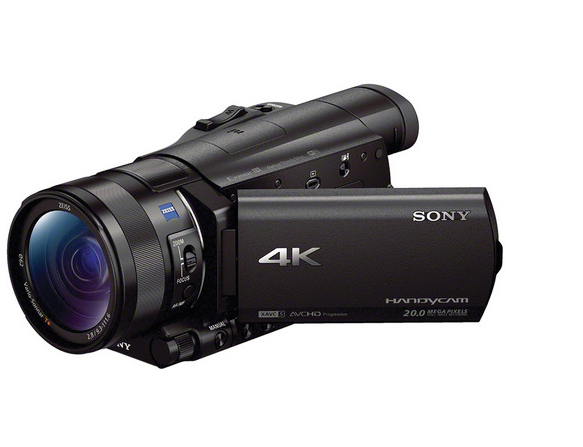4K May Be Coming, And 8K Isn’t Far Behind
As NAB 2014 approaches and every other day there seems to be a new 4K video production rumor, I’m reminded that Las Vegas is a place that holds many secrets. In the back of the central hall at NAB 2013 there was a booth operated by NHK Japan. NHK is the equivalent of the BBC in England as it is the national channel for Japan. It is also responsible for many technological and delivery formats being refined for broadcast.
While the rest of NAB was focused on 4K acquisition, processing and storage solutions, NHK Japan was showing off 8K in glorious, pixlolicious detail for anyone to see. All you had to do was wonder to the outer fringes of a show packed with so much camera technology that it could choke a T-Rex.
The point of all this is that 4K is coming and it’s coming quick. How do I know this? Because if the Japanese can be showing fully functional 8K cameras and monitors for broadcast then you know 4K is very yesterday for them. And the Japanese broadcasters are still years ahead of many other countries when it comes to developing high resolution broadcast technology. The NHK broadcast offices were the first to go all digital and that was 14 years ago.
Added to that, it was the whispered word around NAB last year. High Frame Rates and 3D might have been tantalizing buzzwords, but those in the content production business know that few things drive content consumption than improved pixel quality or audio fidelity.
4K Video Production For Broadcast Is Great, But Can I Stream 4K too?
Netflix has now annoucned that they will be delivering the House of Cards in 4K next spring thanks to the use of the H.2645 codec. Does this mean the internet is fully ready for 4K? Not yet grasshopper. Do you have a 4k TV or Retina display? Probably not, but I bet it’s on your Amazon wish list. But the acceleration of 4K as both an acquisition and a delivery format is ahead of the curve when compared to HDTV by about three to four years.
The lines between dedicated TV and computer are becoming a complete blur. We are seeing the merging of computers and TV’s when we look at Samsung Smart TV’s that have downloadable apps such as Vimeo and Internet browsers. And of course any smart phone or tablet can be used as a TV for playback of TV shows (Hulu Plus) and movies (Netflix, Amazon, Crinkle, etc.)
So if H265 can give consumers the MP3 version of 4K then let the streaming begin. What does that mean in regards to acquisition? Stay tuned for NAB 2014 to see how many manufacturers try and pump in some flavor of compressed 4K into each and every camera system they can. When it comes to 4K; it’s no secret that it’s coming in full force. The only questions are, how long will it take, and how long will it last?
Video Cameras for 4K Production
There are of course those like Philip Bloom who travel the world with the Canon 1C and create impressive work time and again. And of course Red continues to up the ante with the Dragon 6K sensor. But what about the average video producer who does work for local markets and web? Well, that group is standing on the sidelines waiting to see what’s announced at NAB2014. As that time approaches we get more announcements it seems daily of cameras that are or will be coming out that do 4K. For example:
- JVC Announces 4k Version of the PX100 for Under $2,000
- Sony Introduces FDR-AX100 4K for $2K
- Panasonic GH4 4K Camera
These cameras really only show the low to middle end of video production, but they shouldn’t be entirely counted out. Often times these prosumer level cameras help to set the bar for what features the Pro level production cameras need be above. This can be everything from frame rates to the types of codecs can levels of compression used.
That Massive Middle of the Market
NAB 2014 will be awash with numerous companies announcing their 4K wares to the production market and it will be of course interesting to see who really have a viable system to offer. But all of the pieces are finally starting to fall into place: the consumers are aware of the technology, the manufactures are starting to show their prosumer models, and the distribution for broadcast and web are starting to take shape. What’s left is all those mid-level production companies staring to get onboard and working with their clients to generate that 4K content.
– Happy Shooting!

